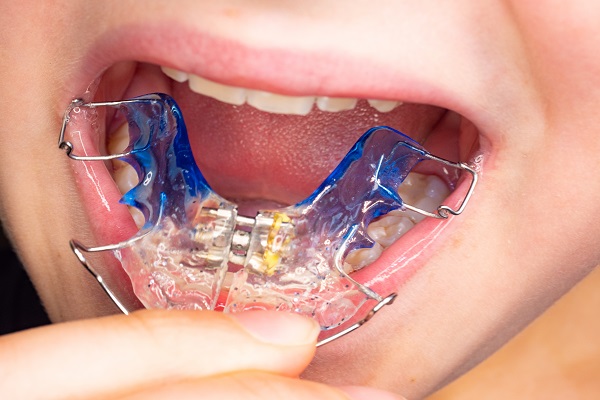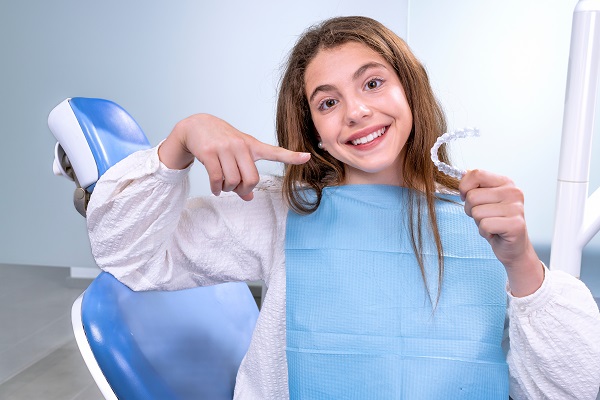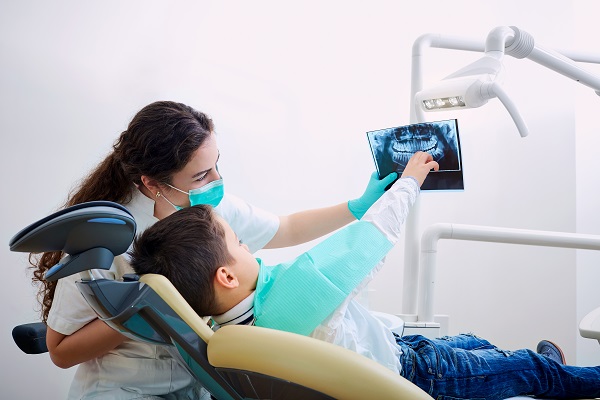What Are Palatal Expanders in Orthodontics?

Palatal expanders are used to widen a patient’s palate (the roof of the mouth), creating more space for their top set of teeth. The American Association of Orthodontists recommends bringing your child in for their first bite assessment by the time they reach seven.
At this stage in their development, their bite should be established enough to spot orthodontic issues. Early detection is crucial since the developing jaw and craniofacial structures of children are considerably easier to mold than the structures of adults. This can shorten the length of treatment by more than half.
Some of the issues that indicate a patient’s palate might not have enough space include:
- Impacted teeth
- Crossbites
- Crowded teeth
Improving bites with palatal expanders
Some people are born with smaller palates due to genetic and other factors. Not having enough space in the roof of the mouth leads to orthodontic issues as the child’s permanent teeth start to erupt. Expanders work by gently applying force on the wearer’s palate, encouraging it to grow. This creates more space on the jaw, reducing the risk of orthodontic issues in the future. Expanders also make correcting any existing orthodontic issues easier once space has been created on the patient’s jaw.
Treatments times with palatal expanders are typically somewhere between three to twelve months. Pediatric orthodontists often keep the appliance in place even after the desired growth has been achieved so the palate can solidify in its new shape.
Expanders can be removable or fixed. They are customized for each child, so they fit correctly along the roof of their mouth. The most recommended types of palatal expanders include:
- Rapid palatal expanders: These are the most commonly used type of expanders. They fit parallel to the molars in the upper dental arch. RPEs with a central screw that is used to activate the device. The orthodontist provides the patient with a key that is used to manipulate the screw and gently push the palatal bones. Treatments with RPE are often completed within six months
- Removable palatal expander: These are recommended when a child’s palate only needs to be slightly expanded. The appliance looks like a retainer, but it comes with a center screw that works similarly to the ones that come with RPEs
- Mini-Implant Assisted RPE: These devices are typically recommended for older patients who did not get orthodontic treatments they needed when they were younger. Such patients require a more powerful appliance to expand their palate since their craniofacial structures have hardened at that point. Mini-Implant Assisted RPEs involve placing two to four mini-implants on parallel points on the patient’s palatal bones. These implants are linked with a center screw. As is the case with the other types of expanders, the screw is used to activate the device
Get your child off to a good start
Issues like a child’s palate not having enough room for their teeth are best addressed early while their bones are still developing. Give us a call or visit our Wayne clinic to set up an appointment with our pediatric orthodontist.
Request an appointment here: https://www.drsallysong.com or call The Orthodontic Center Of Wayne - Dr. Sally Song at (973) 696-5220 for an appointment in our Wayne office.
Check out what others are saying about our dental services on Yelp: Orthodontist in Wayne, NJ.
Recent Posts
Even though braces are common among teenagers, getting them is a new orthodontic experience for every patient. Teens and their parents tend to have many questions about braces and other orthodontic treatments for teens, when to get braces, and what having braces will be like. Here are some of the most common questions orthodontists hear…
The primary goal of early orthodontic treatment is to prevent and fix bite misalignments. Several causes, including genetics, the premature loss of primary (baby) teeth, and harmful oral habits (like thumb sucking) may lead to such anomalies. Orthodontic abnormalities might be congenital or occur during early childhood. Straight teeth can reduce the incidence of dental…
Invisalign® has changed how willing teenagers –– and everyone else –– are to start teeth straightening treatments. It provides an alternative to traditional metal braces that is virtually impossible to detect. Invisalign® treatments work the same way conventional braces work, the aligner trays exert a force on the patient's teeth pushing their teeth into better…
Oral health is foundational to good overall health. Through the help of an orthodontist and bite correction, difficulties with chewing or speaking can be overcome. The inability to ingest food or clearly articulate impacts both physical and mental health. Bite correction has the potential to change the course of an individual’s health and wellness.Changes in…


